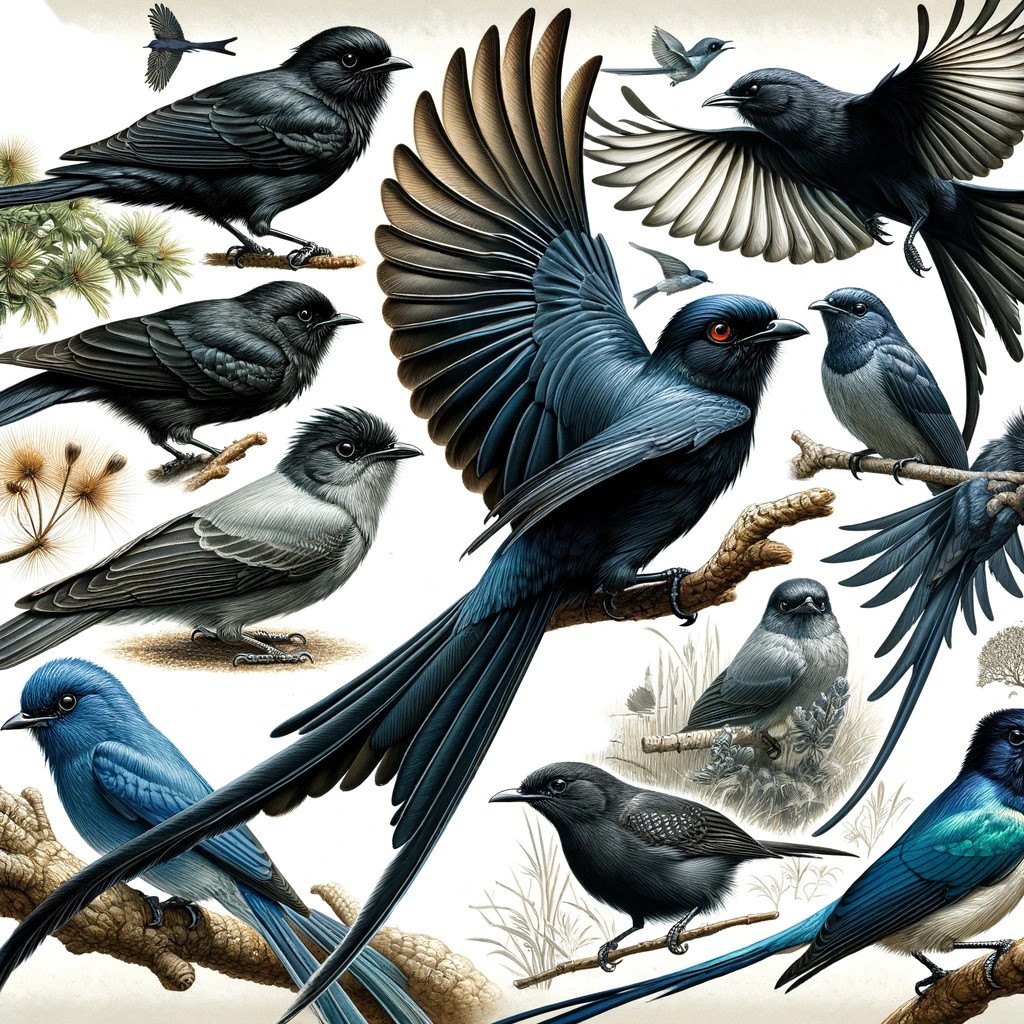
The beautiful country of Nepal is home to an astounding variety of bird species, with more than 850 species recorded within its borders. Among these avian wonders, one remarkable family stands out – the Dicruridae bird family, also known as drongos. These fascinating birds have captured the attention of wildlife enthusiasts and researchers alike, due to their distinct appearance and intriguing behaviors. In this article, we will delve into the technical aspects of the Dicruridae bird family and their significance within Nepal's rich avifauna.
Physical Characteristics of Dicruridae Birds
The Dicruridae bird family is easily recognizable by their sleek black or dark grey plumage, coupled with elongated forked tails that typically measure up to twice their body length. They are medium-sized birds, with an average length of 25 to 35 centimeters. Drongos possess a sturdy build and strong legs, allowing them to effortlessly move through vegetation or perch on branches for an extended period.
Adaptations and Behavioral Traits
One of the most compelling aspects of studying drongos is their flexible feeding habits. Primarily insectivorous, these birds rely on an array of hunting techniques that include aerial hawking, which involves catching flying insects mid-air, and gleaning, which pertains to plucking insects from leaves or branches. Drongos are also known to consume small vertebrates like lizards and occasionally partake in nectar consumption.
Possessing a complex vocal repertoire, drongos are famous for their mimicking abilities. They can imitate the calls of various other bird species and even sounds made by mammals. This mimicry serves multiple purposes such as deterring potential predators or attracting other birds to join in mobbing behavior against perceived threats.
Dicurgidae Species in Nepal
Nepal is home to several species of drongos, including the Black Drongo (Dicrurus macrocercus), Ashy Drongo (Dicrurus leucophaeus), Hair-crested Drongo (Dicrurus hottentottus), and the Greater Racket-tailed Drongo (Dicrurus paradiseus). Each of these species exhibits slight differences in appearance and behavior, making them all the more fascinating to study.
Conservation Status and Significance
As with many bird species, habitat destruction, and fragmentation are significant concerns for the Dicruridae family. The loss of forest and wetland habitats in Nepal due to urbanization and agricultural development poses a direct threat to these birds' survival. As they serve as vital natural pest controllers in their ecosystems, conserving and maintaining their populations is essential for balanced ecosystem health within Nepal.
In conclusion, the Dicruridae bird family is an intriguing component of Nepal's diverse avian species that warrants further exploration and research. The unique characteristics and wide range of behaviors exhibited by drongos provide valuable insight into the intricate work of evolution while shedding light on their ecological importance. As we continue to appreciate and better understand these magnificent birds, we must also emphasize conservation efforts aimed at preserving their habitats and population stability.
